Remote NDIS Miniport eliminates the need for writing an NDIS mini port device driver for network devices attached to the USB bus. RNDISMP6 can do so by defining bus-independent message sets and describing how it will operate over the USB bus. RNDISMP6.SYS is a kernel file that contributes towards running a USB ethernet network on Windows devices. It’s a critical file system that can make your device crash and cause a blue screen of death. Fortunately, you can follow some simple steps to eliminate the RNDISMP6.SYS failed blue screen error.

DRIVER_IRQL_NOT_LESS_OR_EQUAL, What failed RNDISMP6.SYS
Fix RNDISMP6.SYS failed Blue Screen on Windows 11/10
Follow the suggestions if the RNDISMP6.SYS failed Blue Screen keeps occurring on your Windows device:
- Run Network Adapter Troubleshooter
- Run SFC and DISM Scans
- Update USB and Network Drivers
- Use Powershell Script
- Run these Network Commands
- Reset Network Settings
- System Restore to a point before the problem started
Now let us see these in detail.
1] Run Network Adapter Troubleshooter
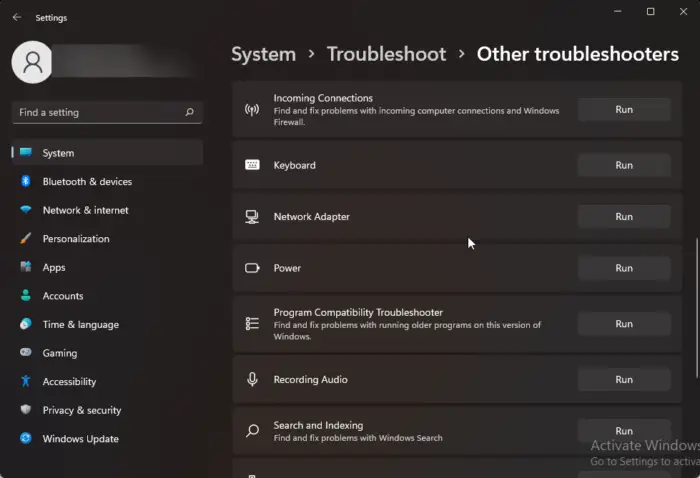
Before getting started with different troubleshooting methods to fix this issue, try running Microsoft’s Automated Troubleshooting Services as a first step to diagnose and repair common Network issues. Here’s how:
- Press the Windows key + I to open Settings.
- Scroll down and click on Troubleshoot > Other Troubleshooters.
- Click on Run beside Network Adapter and follow the instructions on-screen.
2] Run SFC and DISM Scans
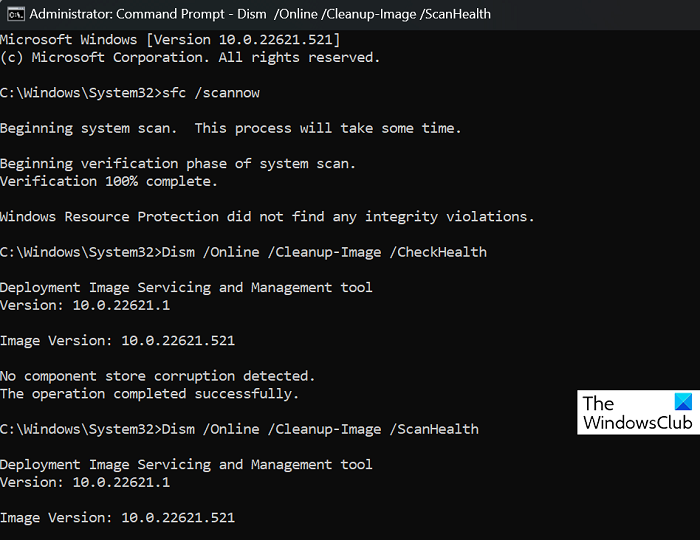
RNDISMP6.SYS failed Blue Screen may occur due to corrupted/damaged Windows system files or system image corruptions. Run SFC and DISM to scan and repair these. Here’s how:
Click on the Windows key and search for Command Prompt.
Click on Run as Administrator.
Type the following commands one by one and hit Enter:
For SFC:
sfc/scannow
For DISM:
DISM /Online /Cleanup-Image /RestoreHealth
Restart your device once done and check if the Kernelbase.dll making applications crash is fixed.
3] Update USB and Network Drivers
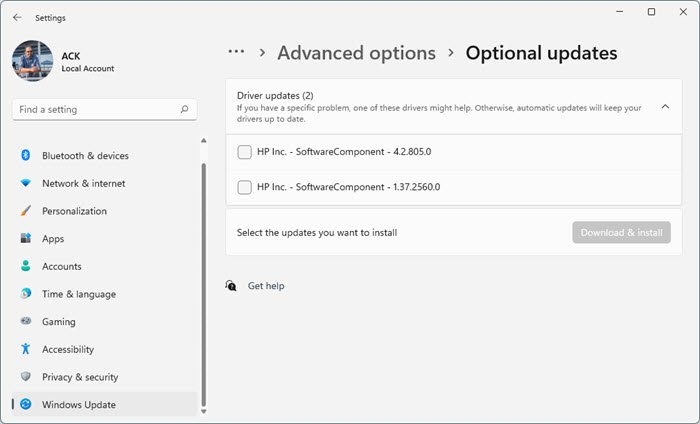
Outdated or corrupted USB and Network drivers can also be responsible for RNDISMP6.SYS failed Blue Screen. Update your device’s Network drivers and check if the issue gets fixed. Here’s how you can do it:
- Open Settings and navigate to Settings > Update & Security > Windows Update.
- Right under it, look for a clickable link— View optional updates.
- Under Driver Updates, a list of updates will be available, which you can choose to install if you are facing an issue manually.
4] Disable the netsetupsvc service and make modifications in the Registry Editor
If you’re still unable to fix this error, disable the Network Setup Service (NetSetupSvc) service, make modifications in the Registry Editor and then re-enable it. Here’s how:
Press the Start button, search for Command Prompt, and select Run as Administrator.
Type in the following command and hit Enter.
sc.exe config netsetupsvc start=disabled
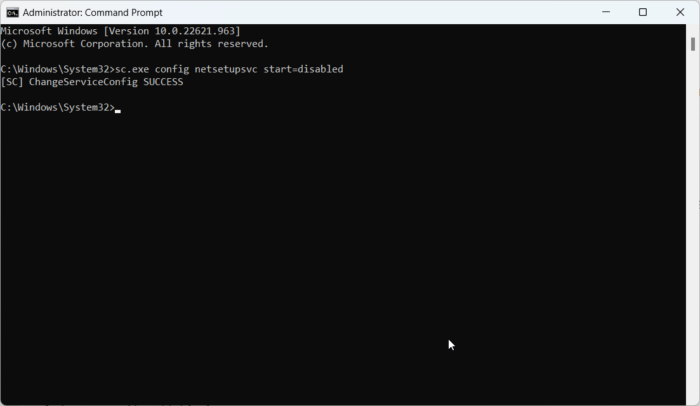
Now, press the Windows key + R to open the Run dialog box.
Type regedit and hit Enter.
Once the Registry Editor opens, navigate to the following path:
HKEY_LOCAL_MACHINE\SYSTEM\CurrentControlSet\Control\Class\{4D36E972-E325-11CE-BFC1-08002BE10318}
Add three DWORD named IfType, MediaType, and PhysicalMediaType set to 6, 0, and E, respectively.
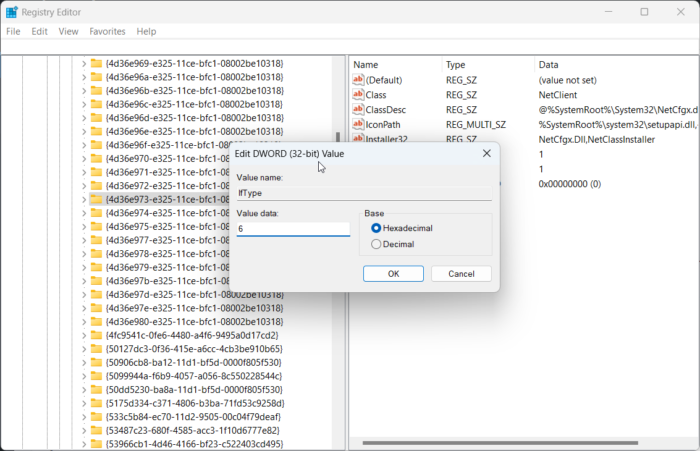
Again, open Command Prompt and enable netsetupsvc by running the following command.
sc.exe config netsetupsvc start=demand
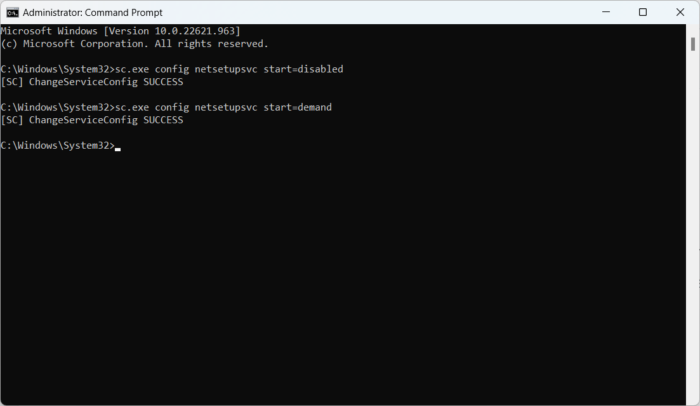
Once done, restart your PC and check if the RNDISMP6.SYS error gets fixed.
5] Run these Network Commands
Running the network commands will reset the TCP/IP stack, renew the IP address, Reset Winsock and flush the DNS client resolver cache. Here’s how you can do it:
Press the Windows key, search for Command Prompt, and select Run as Administrator.
Type the following commands one by one and hit Enter.
netsh winsock reset
netsh int ip reset
ipconfig /release
ipconfig /renewv
ipconfig /flushdns
Restart your device once done.
6] Reset Network Settings
If none of these steps were able to help you, reset the network settings of your device. Performing a Network reset will remove and then reinstall all your network adaptors. It will also reset all related settings to their defaults. Here is how you can do it:
- Press the Windows key + I to open Settings.
- Navigate to Network & Internet > Advanced network settings > Network Reset.
- Click on Reset Now beside Network Reset and follow the instructions on-screen.
7] System Restore to a point before the problem started
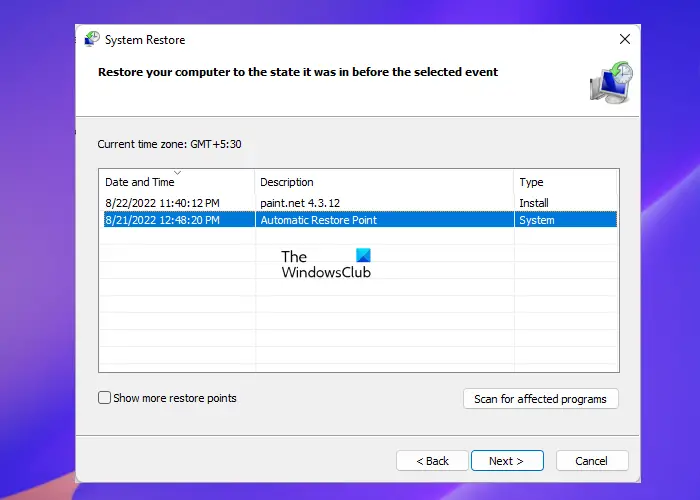
Blue Screen errors can occur due to install failure or data corruption, System Restore can make your device to working condition without reinstalling the operating system. Doing so will repair the Windows environment by installing the files and settings saved in the restore point. Here’s how you can perform a System Restore. Note that this can be done only if you’ve created a System Restore Point earlier.
Fix: ndis.sys failed BSOD error BUGCODE_NDIS_DRIVER
Why does Windows 11 have blue screen error?
A blue screen error often causes your device to crash, shut down or restart unexpectedly. When this error occurs, a blue screen with a message your device ran into a problem and needs to restart will be visible. Errors like these off these often occur due to corrupted drivers and system files.